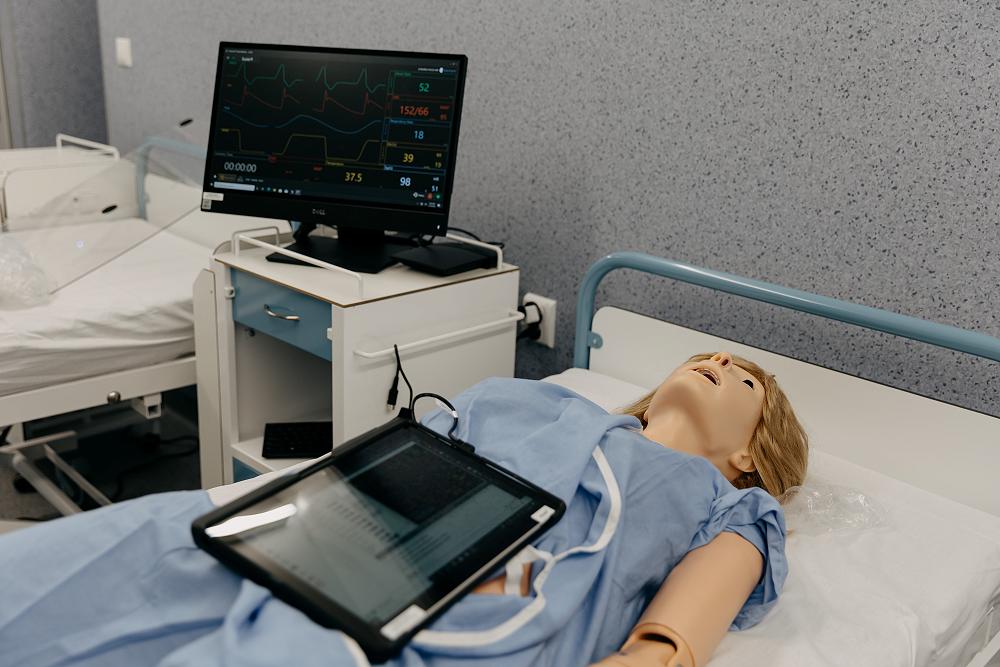
Simulation in Nursing and the importance of maintaining clinical placements
Dr Julie Bowen-Withington, ARA: There is an abundance of literature supporting the use of high-fidelity simulation in health care education using computerised manikins – however, new research shows students are concerned at the idea of simulation replacing clinical practice.
“I’ve been quite immersed in simulation in nursing, having worked with it now for 22 years,” says Dr Julie Bowen-Withington, Principal Nursing Lecturer at Ara Institute of Canterbury. “Some years ago, a salesperson for a simulation business told me nursing schools needed to invest in state-of-the-art, computerised manikins to attract more enrolments. It struck me as a very loaded statement, and I wanted to interrogate it.”
Bowen-Withington’s PhD study critically examined the emerging discourses and discursive practices that influence the use of high-fidelity simulation in pre-registration nursing education in Aotearoa New Zealand.
She found there was much literature supporting the use of high-fidelity simulation as a teaching modality in health care education, but little that offered a critical reading of simulated learning or the ways in which simulated learning translates into practice.
“I approached it from a philosophical perspective using Foucauldian analysis, looking at what was being said about computerised manikins, and who was saying it, and how such discourse has been sustained.”
As well as examining international nursing, medical and grey literature from 2000 to 2010, Bowen-Withington conducted interviews and focus groups with Aotearoa New Zealand pre-registration nursing students and academic nurse educators from both the South Island and North Island Schools of Nursing. She also interviewed a representative from the New Zealand Nursing Council and another from the simulation industry.
Analysis of literature surfaced discourse that talked of computerised manikins being initially used in health care education to aid in skill acquisition and the development of competency and confidence.
“As the timeline of the literature progressed, other discourse emerged around patient safety. This discourse talked of computerised manikins improving patient safety outcomes with a reduction in medical errors. More recent discourse has seen a shift from using high-fidelity simulation for the clinical acquisition of skills, to using it to replace clinical hours and actual clinical experiences.”
This was contrary to the views of the nursing students Bowen-Withington interviewed.
“They were quite adamant that they didn't want any replacement of clinical hours,” she says. “This is significant because the literature – particularly that coming out of America, where up to 50% of clinical placements have been replaced with simulation – suggests we should be moving towards replacing actual clinical experiences in favour of simulated ones in nursing. The students were anxious about this and felt it wouldn’t prepare them for the real world of nursing. This was a common thread through the study.”
The students spoke about being unable to develop cultural awareness or sensitivity for the computerised ‘patient’.
“Students found high-fidelity simulation using a manikin useful for skill acquisition and practice but felt manikins could never replace a real patient. Manikins are not real people, so the students felt they couldn't develop a therapeutic relationship with them. They couldn't hone their communication and relationship-building skills. As some of the students put it, the manikin didn’t have wairua.”
Academic nurse educators thought only a very small proportion of clinical experience should be replaced by simulation and felt there shouldn’t be any significant transition towards simulation without further research-based evidence.
The New Zealand Nursing Council representative also wanted to see more research before increasing simulated course components, and was “very keen” on the development of nationally-standardised simulation scenarios.
“The simulation industry rep liked the idea of introducing standard scenarios as well,” Bowen-Withington notes. “They were aware that computerised manikins are very much about skill acquisition and confidence and competence in nursing. They also talked about other technologies and platforms available today, such as virtual reality and the HoloLens, which may potentially surpass the mannequin.”
The educators raised the issue of resourcing computerised manikins.
“The cost of running simulations with mannequins is significant. To have standardisation across the country would mean that every nursing school would have to have the same equipment, and they felt that was just not viable.”
Bowen-Withington hopes her research raises awareness about the use of high-fidelity simulation in pre-registration nursing education, and encourages academic nurse educators and stakeholders to seriously consider its use in replacing clinical experiences, questioning the conventional wisdom about the benefits of simulation.
“There are alternatives to simulation – we don’t just have to do one thing. We can consider our teaching and learning pedagogy and tools and use those in different ways.”
She plans to undertake further research into the cultural aspects of nursing education, and the lack of culture inherent in simulation activities.
“I want to know how we can better incorporate cultural awareness and cultural sensitivity as we use this technology,” she says.
Julie Bowen-Withington’s background is in general nursing, midwifery, women's health, sexual health, family and child health, Indigenous health, remote area nursing (Australia), population health nursing, nursing management, and nursing education. She has nursed in England, Australia and New Zealand for over 43 years. Since 2006, Julie has been a full-time nursing lecturer in the Bachelor of Nursing programme and the Master/Bachelor of Nursing Professional Practice Programme at Ara. Julie is currently a Principal Nursing Lecturer and simulation lead for the Ara Department of Health Practice. Her main research interest areas include nursing education and simulation. Julie has recently completed her PhD studies through AUT, focusing on simulation and the emerging discourses within the use of high-fidelity simulation in pre-registration nursing education. Contact Julie Bowen-Withington
